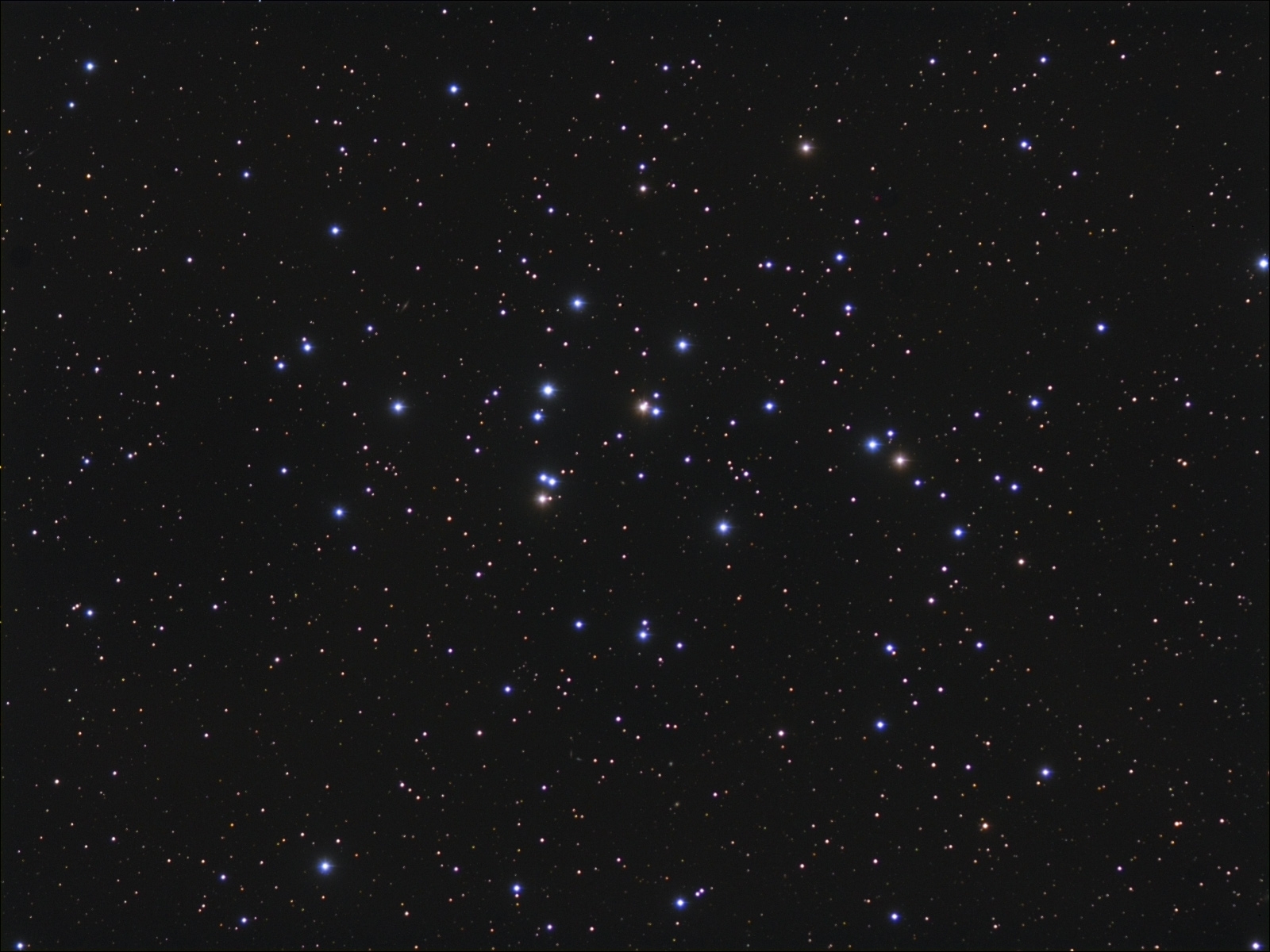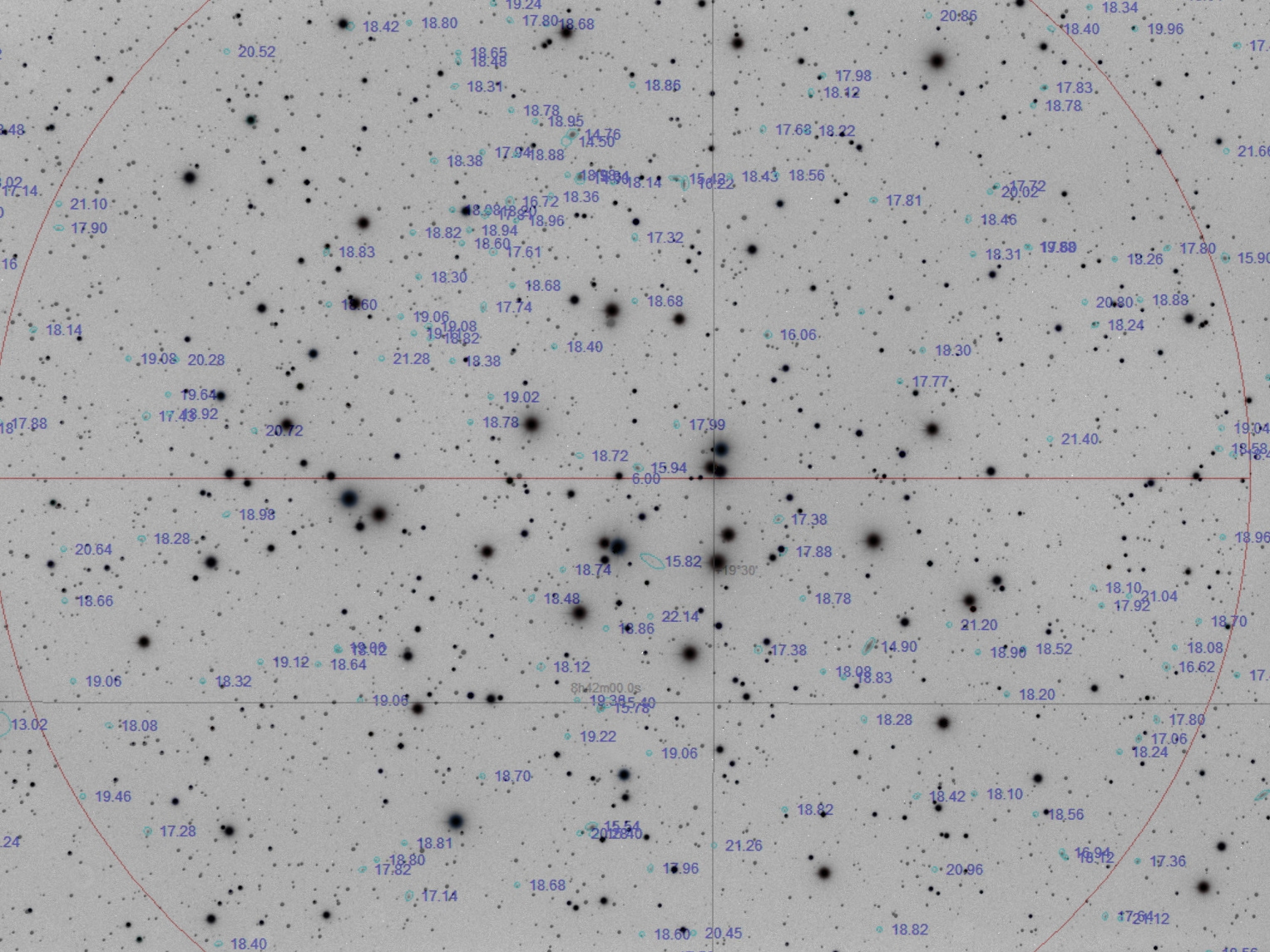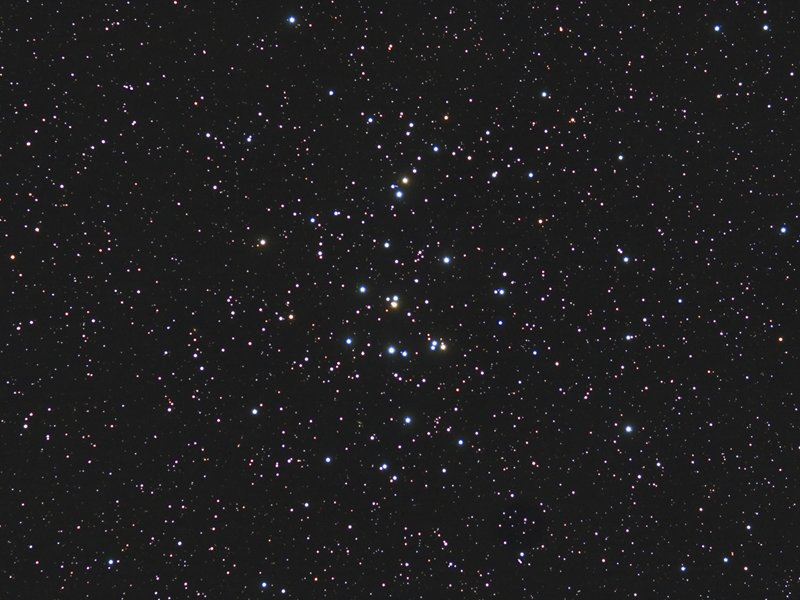

Open Cluster M44 in Cancer


Photo Details
 Telescope: Sky90II at f/4.5 Takahashi
Telescope: Sky90II at f/4.5 Takahashi
 Camera: St-2000XM Baader LRGB 1.25" filters
Camera: St-2000XM Baader LRGB 1.25" filters
 Mount: NJP Takahashi
Mount: NJP Takahashi
 Guiding: Self guided
Guiding: Self guided
 Exposure: L 18x3min, RGB 5x5min
Exposure: L 18x3min, RGB 5x5min
 When: Spring 2014
When: Spring 2014
 Other information: taken from city of Tarnow
Other information: taken from city of Tarnow 
The Beehive Cluster (also known as Praesepe (Latin for "manger"), M44, NGC 2632, or Cr 189) is an open cluster in the constellation Cancer. It is one of the nearest open clusters to the Solar System, and it contains a larger star population than most other nearby clusters. Under dark skies the Beehive Cluster looks like a nebulous object to the naked eye; thus it has been known since ancient times. The classical astronomer Ptolemy called it "the nebulous mass in the breast of Cancer," and it was among the first objects that Galileo studied with his telescope.
The cluster's age and proper motion coincide with those of the Hyades open cluster, suggesting that both share a similar origin. Both clusters also contain red giants and white dwarfs, which represent later stages of stellar evolution, along with main sequence stars of spectral classes A, F, G, K, and M.
The Beehive is most easily observed when Cancer is high in the sky; in northern latitudes this occurs during the evening from February to May. At 95 arcminutes across, the cluster fits well in the field of view of a pair of binoculars or a telescope of low power.
Galileo was the first to observe the Beehive in a telescope, in 1609, and was able to resolve it into 40 stars. Charles Messier added it to his famous catalog in 1769 after precisely measuring its position in the sky. Along with the Orion Nebula and the Pleiades cluster, Messier's inclusion of the Beehive has been noted as curious, as most of Messier's objects were much fainter and more easily confused with comets. One possibility is that Messier simply wanted to have a larger catalog than his scientific rival Lacaille, whose 1755 catalog contained 42 objects, and so he added some bright, well-known objects to boost his list.
The Beehive is most easily observed when Cancer is high in the sky; in northern latitudes this occurs during the evening from February to May. At 95 arcminutes across, the cluster fits well in the field of view of a pair of binoculars or a telescope of low power.
Galileo was the first to observe the Beehive in a telescope, in 1609, and was able to resolve it into 40 stars. Charles Messier added it to his famous catalog in 1769 after precisely measuring its position in the sky. Along with the Orion Nebula and the Pleiades cluster, Messier's inclusion of the Beehive has been noted as curious, as most of Messier's objects were much fainter and more easily confused with comets. One possibility is that Messier simply wanted to have a larger catalog than his scientific rival Lacaille, whose 1755 catalog contained 42 objects, and so he added some bright, well-known objects to boost his list.
Photo Details
 Telescope: Sky90II at f/4.5 Takahashi
Telescope: Sky90II at f/4.5 Takahashi
 Camera: Canon 350D Baader IR filter
Camera: Canon 350D Baader IR filter
 Mount: NJP Takahashi
Mount: NJP Takahashi
 Guiding: Orion ST80, QHY5
Guiding: Orion ST80, QHY5
 Exposure: 14x300s, iso800
Exposure: 14x300s, iso800
 When: December 2008
When: December 2008
 Other information: good weather condition
Other information: good weather condition